You can view all the posts in the epic “Writing a Maths Scheme of Work” series on this page. It’s kind of like Game of Thrones, only with slightly less nudity and dragons.
Welcome to Part 6 of the epic maths Scheme of Work saga that is gripping the nation… well, specifically that rather niche subset of the nation that are currently trying to write schemes of learning for the new maths curriculum.
We ended Part 5 on something of a cliff-hanger, where Karen, Colm and I (still known as “Team Scheme”, although I am officially the only person calling us that) were about to start work on trying to figure out a logical order to cover all the content. Well, I am pleased to report that having been off timetable all Tuesday, we managed to achieve it. Well, Draft 1 at least. And we are all still talking to each other.
In the end, we found the wonderful Excel document produced by Kangaroo maths to be by far the most useful:
We set about our work as follows:
1) We started by printing out the Stage 7 to 11 Overview tabs (as a treat, we did this in colour)
2) We then went through each one, starting with Stage 11 and assigned content to each year. I have to say that we largely agreed with the content suggested by Kangaroo maths, and just made a few changes along the way. We tried to group content together so we could cover it in depth – for example, we moved all of the Stage 9 and 11 straight line graph content to Year 10. And anything that was new and we didm’t really know how it was going to be examined (e.g. kinematics and the new functions stuff) we tended to move to Year 10 or 11 to buy us some time to figure out what it will actually look like.
3) Having allocated content to each year group, we then set about deciding on an order. We started with a blank Excel template of the next school year:
As you can see, we have left the final week of each half term blank for an assessment as I talked about in this post.
4) Next came the fun bit… well, it was fun for the first hour or so, but started losing its appeal slightly 6 hours in. We took our Stage 11 content and tired to assemble it into a coherent order. This was made very easy by the lovely Kangaroo Maths spreadsheet as we could simply cut and paste the objectives/skills from their document to ours. This meant it was very simple to make changes, readjust things, and see the progress we were making.
After a while, we had something like this, which is from Half Term 3 of Year 11:
I even like Kangaroo Maths’ choice of colours!
5) We then repeated this for Years 7 to 10.
When deciding on the order of content, we had a few guiding principals:
1. Wherever possible, topics should follow each other in a logical order. So, fractions get taught before probability, and straight lines before reflections.
Here is a snap shot of some of the Year 8 scheme of work, so you can hopefully see what I mean:
2. We purposefully left single weeks towards the end of a half term free to review key skills that would be needed for new content the following term. So, a basic algebra review would come at the end of Term 2 in Year 9, and then Term 3 would start with Quadratics.
3. We made time for things like “Calculator Week” , “Wordy Week” and “Formula Fortnight”, which help students develop key skills which will be needed across several areas of maths
4. Following on from our work on the Year 7 and 8 scheme of work over summer, we have very much gone for depth ahead of breadth. If ever there was a debate if we should allocated 2 or 3 weeks to a topic, we always went for 3. This will hopefully compel staff to go into the topic in depth and use some of the rich resources (in addition to the compulsory rich resource – see previous post for details on the structure of the scheme of work) I will provide once they have finished teaching the basic skills.
5. And if classes do finish a topic a few lessons early, there will be a series of non topic specific rich tasks for them to complete. I am very much in favour of the whole of a year group moving onto the next topic at the same time, instead of groups rushing ahead. This means students can talk about their shared experiences in maths lessons, and as staff we can plan together and also share our experiences teaching the content.
This all gets pitched to our staff at a Twilight meeting this evening, and taught for the first time to our Years 7-9 from September. The existing scheme of work will continue to run for next year’s 10s and 11s who will be sitting the current GCSE. I am hoping it will be seen as a simple, fun, engaging scheme that staff enjoy teaching and students enjoy learning, and which is assessed sensibly and accurately. We have biscuits to help our cause.
There is still much to do. The order of topics is still very much up for discussion, and we have conveniently ignored the slightly important question of what on earth do we do with the (bigger than ever) group of students who will be sitting the new Foundation paper, but we have plenty of time to sort that one out :-/
We are also holding fire on writing any Medium Term plans until we see the ones from Kangaroo Maths that are scheduled for release in July. I have been lucky enough to see a sneak preview of these, and they look superb. I am not allowed to share them yet, but here is a world exclusive peek…
In future posts (assuming I don’t get lynched by our department when pitching this), I will share my ideas fro rich tasks, along with samples of our assessments and homeworks.
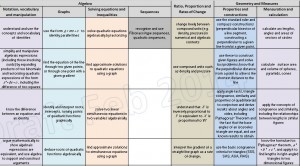

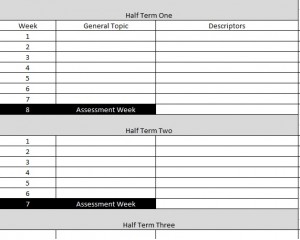
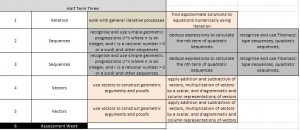
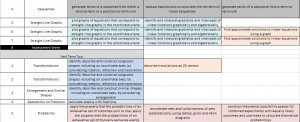
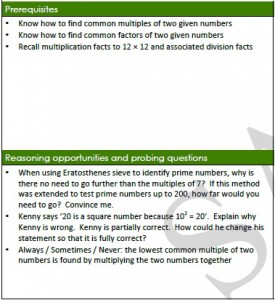
We are seriously considering having only one order of topics which all year groups follow. Objectives for each topic will be across 12 levels which are in four rough bands (pre-GCSE, G-D, D-B, B-A*). So every year group will be doing rounding at the same time, just at different levels. We’re both excited and scared by the idea. What do you think?
We are also going through a complete change in SOW, well it’s more me alone… And we are moving to mastery curriculum, and have also used kangaroo maths as a base point…
It’s still a work in progress, but I thought you could look at and share my ‘vision’ of what the SOW could look like, just to give a few more reflection points for people reading this blog…
I imagine most of our lowest ability pupils would start at stage 4, but I will complete the SOW down to Stage 3…
https://dl.dropboxusercontent.com/u/97499574/Stage%204.xlsx
I have used the previous stage for the prior knowledge, and then separated each stage’s outcomes into three categories ‘key fluencies’, ‘applied areas’ and ‘problem solving’… I have added a further section for broadening and deepening understanding, and hope that this will be filled in over the first year of teaching the SOW…
I have formatted each section as an arrow to imply that each series of lessons needs to have the hierarchy of conceptual understanding – fluency – reasoning and applying – problem solving…
Finally I have decided on a rough order with the intention to revisit the most important topics twice in the year.
Another key point to note is that I have tried to separate fractions into two units, one where the pupils are asked to consider them to represent a size or a position on a number line, and one where they are to consider them as an operator (thanks to Mr Reddy for that inspiration)…
When I finish all stages, I will share it… And then again when it has been supplemented with resources and links…
Hope it’s useful for the readers…
That is superb!
I will put a post together about this early next week, and if you could share your future progress, that would be absolutely fantastic.
Thanks so much
Craig
I think it is an excellent idea.
We are doing pretty much the same thing. The difficulty we have found is when you get to Higher Only topics, such as Circle Theorems, Histograms, the new Functions material, etc. But all these topics build upon work that all abilities can access, so it is certainly do-able!
We are leaving this stuff until Year 10 and 11 to give ourselves a bit of thinking time!
Yes – am certainly finding that. I’ve just finished “angles”, and quite like the way it progresses from “recognising angles” through to “proving circle theorems”. It’s assessment and homework that’s causing the greatest difficulty with those top groups. At the moment these are being left to the professional opinion of the A/A* class teachers – cop out!
What about assessment?
Each topic?
Each half term?